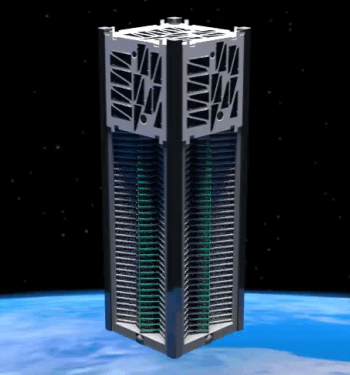KickSAT and Sprites
 Mission
Mission
The Big Picture the goal is to bring down the huge cost of spaceflight, allowing anyone from a curious high school student or basement tinkerer to a professional scientist to explore what has until now been the exclusive realm of governments and large companies. By shrinking the spacecraft, we can fit more into a single launch slot and split the costs many ways. I want to make it easy enough and affordable enough for anyone to explore space.
Kicksat is an amateur radio CubeSat technology demonstration mission designed to demonstrate the deployment and operation of prototype Sprite “ChipSats” (femtosatellites) developed at Cornell University by Zac Manchester. ChipSats like the Sprite represent a disruptive new space technology that will both open space access to hobbyists and students and enable new types of science missions. A significant portion of the KickSat mission has been financed by over 300 individual sponsors through the crowd-source funding website Kickstarter.
Orbital parameters
Name Kicksat NORAD ? COSPAR designation ? Inclination (degree) ? RAAN ? Eccentricity ? ARGP ? Orbit per day ? Period ? Semi-major axis ? Perigee x apogee ? Drag factor ? Mean Anomaly ?
Downlink
Beacon: 437.505 MHz FM 1 watt AFSK 1200 baud AX.25
The KickSat beacon radio will transmit telemetry packets with information like battery charge state, temperature, and Sprite deployment status. Packets will be transmitted every 30 seconds when the satellite is powered on and every 250 seconds when it is in charging mode. Standard Ham radio equipment and software can be used to receive and decode the beacon packets.
Call
Call sign: unknown
TLE (Preliminary, check calpoly for updates).
KickSat 1 99902U 14108.86625197 .00000973 00000-0 40213-5 0 00004 2 99902 051.6688 055.7184 0022399 282.0950 176.0396 15.84690918000010
Status
Will be launched 14-04-2014. Scrubbed due to helium leak in the first stage, new launch Friday 18-04-2014 19:25 UTC. Decayed 2014-05-14 01:36 UTC without being able to launch the Sprites.
Sprites
![]()
Downlink
Beacon: 437.240 MHz MSK 10mW
- Encoding: Data bits are encoded as 511 bit PRN codes (Gold Codes)
- Chip Rate: 64 khz (this is the rate at which PRN bits are transmitted)
- Bit Rate: 125 bps (this is the rate at which data bits are transmitted and is equal to Chip Rate / PRN Length)
- Packet Format: Custom
All of the Sprites transmit on the same frequency. Each Sprite has a unique pair of PRN codes that it encodes its transmissions with, allowing a receiver to tell the Sprites apart (this is known as CDMA). A list of all Sprite PRN codes codes is available online. Due to the low power of the Sprite transmitter, some signal processing tricks are used to ensure that data can be successfully decoded with low gain antennas. The Sprite receiver is written in C++ for the GNURadio framework and is available on GitHub. An automated install script is available here.
Status
Decayed. Will be launched 30-04-2014 08:59 UTC. Launched and active.
Telemetry
Example: P4C,783,0,0,0, the first three letter code (P4C) indicates that the satellite is in charging mode. The next number is the battery voltage in units of 1/100 volt, so 783 corresponds to a battery voltage of 7.83 volts. The next number (zero) is the number of main flight computer resets (in our case a Nexus S smartphone thanks to the PhoneSat team). The next number is the number of watchdog microcontroller resets. The last number (zero) is a status byte indicating if the ChipSats have been deployed yet.
Homepage and other references:
